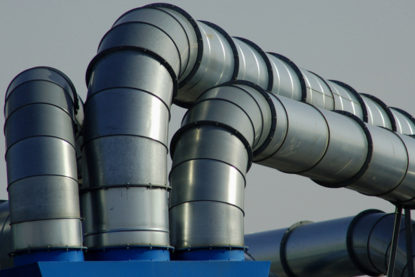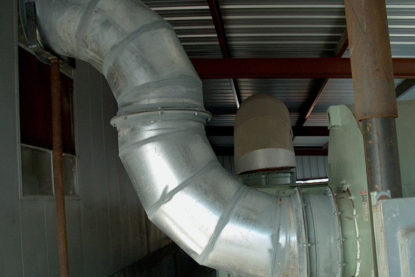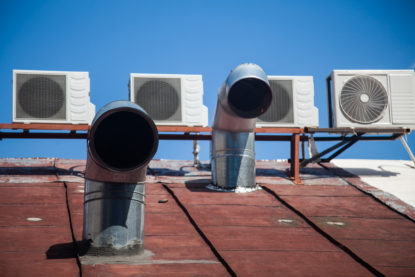Custom Industrial Ventilation Systems
Industrial ventilation is a method of controlling worker exposure to airborne toxic chemicals, flammable and solvent vapors, oil mists and dusts by exhausting contaminated air aways away from the work area and replacing it with clean air.
RMI Industrial Services realizes the importance of this information. Understanding operational, health and safety issues for your industrial ventilation stainless steel system can avoid future problems, and more importantly provide the efficient, safe and comfortable working environment your company has grown to rely on.
3 Tips about Ventilation Systems
RMI Industrial Services’ industrial ventilation contracts provide a few tips to keep in mind when working with ventilation systems:
Ductwork Damage: holes, cracks, openings or clogs can all interfere with the ventilation.
Proper Airflow Balancing: sometimes the system can be inadvertently affected by adding new ducts or lengthening existing ones.
Contaminant Source: Sometimes the contaminant cannot enter the ventilation system because the source has been moved too far from the hood, or employees have blocked, closed or modified the hood as it interferes with the work space.
If you encounter the above problems our industrial ventilation contractors will evaluate using smoke generators in combination with their knowledge and comprehension of ventilation systems to maintain a safe working environment for your company.
How can RMI help?
RMI Industrial Services and our industrial ventilation contractors can customize your new ventilation system or troubleshoot your existing system.
RMI Industrial Services employs expertise in industrial ventilation contractors through knowledge and comprehension of each type of ventilation: dilution and local exhaust ventilation.
Dilution ventilation uses exhaust fans or open doors/windows to disperse the contaminant, providing makeup air in its place. Local exhaust ventilation utilizes fans to create a low-pressure air system that “sucks” contaminated air from the high-pressure work area. Local exhaust systems have five basic elements: hood, ducts, air cleaning devices (occasionally), fans and exhaust stacks.
Local exhaust ventilation utilizes fans to create a low-pressure air system that sucks contaminated air from the high-pressure work area. Local exhaust systems have five basic elements: hood, ducts, air cleaning devices (occasionally), fans and exhaust stacks.



